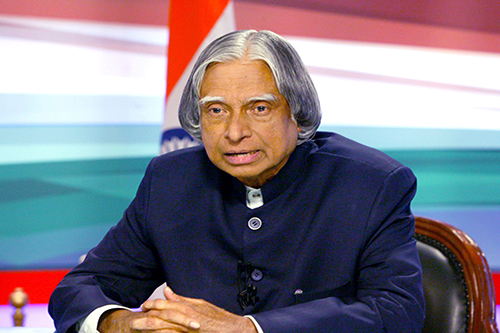Ramanadha Sastry Priest in APJ Abdul Kalam’s childhood stories
Ramanadha Sastry : Teacher not only regretted his behaviour, but there was also a strong sense of conviction that Lakshmana Sastry had instilled in order to reform him. The action of our new teachers was not accepted and amounted to breaking the communal harmony and caste. So he asked the teacher to apologize and leave the school and the island.
The whole small society of Rameswaram was highly stratified and rigid in relation to the segregation of various social groups. His science teacher, Sivasubramania Iyer, was a religious Orthodox Brahmin, a very religious type of person. The new teacher taught him not only to honor his own religion, but also to respect other religions.
Write a letter to your friends and tell them that you have earned your first wage. Your soul will live in this house until tomorrow, but none of us will be here when Rameswaram comes to visit, not even in our dreams. Fate did not lead me to this place, nor did it sweep me away from the homeland of my childhood.
Padma Shri Ram Nath Shastri was born on April 15, 1914, also known as “Herd of Dogri” for his central role in the revival and revitalization of the place. He began his career as a Sanskrit teacher in high school and became a university lecturer after 5 years. In 1944, on the day of Basant Panchami, he founded the Dogri Sanstha with a few friends.
Professor Shastri was determined to lead the Dogri literacy movement. Through Padma Shri Ram Nath Shastris writings in various genres, he succeeded in pushing Dogri onto the national stage. Ramanadha Sastry mentioned our former President APJ Abdul Kalam’s childhood stories that helped him become the person he became in his life.
Kalam had three close friends from Dr. Kalam’s childhood: Ramanadha Sastry, Aravindan and Sivaprakasan. Our former president APJ Abdul Kalam’s three closest childhood friends were Ramanadha Sastry, Sivprakasan and Arvindan. Both Ramanadsha and Arvindan were Kalam’s school friends.
Aravindan started a transport company for pilgrims to Rameswaram Temple and Sivaprakasan became a catering company for Southern Railway. Ramanadha Sastry was the son of Pakshi Lakshmana Sastry, the priest of the RAMESWARAM Temple, and assumed the priesthood of the temple after her father. After she assumed the priesthood, she and Arvindan set about organizing transport to the pilgrims, and Sivprakasan became the catering entrepreneur of the Southern Railway.
One day, when he was in the fifth grade, a new teacher came into their class and told him to sit on the last bench because he belonged to a lower class in society and the teacher did not like students sitting with members of Hindu or Muslim families. Apj Abdul Kalam’s best friend Ramanadha became upset after this incident and complained to the teacher to her father, who was chief priest of the Rameswaram temple. “Abdul Kalam and his family as a whole were involved in Hindu customs and religion. As a Muslim child, he never treated others badly and never felt he belonged to another religion, and his friends were all Hindus.
Read More : APJ Abdul Kalam – The warrior with a modest character and a charming smile
In accordance with our social ranking, the new teacher saw it and asked Kalam to sit with him on the back bench, and he was sad for the young Ramanadha Sastry. He could not bear the son of a Hindu priest sitting next to a Muslim boy. Kalam himself was sad that the teacher did not let him sit in front of his Hindu friend in front of the class.
Kalam wore a cap to show that he was Muslim, and he sat in the front row of Ramanadha Sastry carrying a holy thread. The new teacher could not tolerate watching a Muslim boy sitting alongside the son of a Hindu priest. Another young teacher asked Abdul not to sit in the front row with the priest’s son because he was Muslim.
Shastris father Vaid Gauri Shankar was an Ayurvedic physician who belonged to a small village near Marhi in the Reasi tehsil of the Udhampur district (today Reasi district). He wanted his son to take up the same profession and instructed him to learn Sanskrit. The science teacher Siva Subramaniam Iyer wanted Kalam to be trained because he recognised his intelligence.
Kalam’s parents gave him a relaxed environment at home and arranged everything for him for the necessities of life. As a speaker, his belief in the dignity of work led him to collect and sell seeds. I used to collect seeds and sell them to grocery stores and mosques on the street.
Abdul Kalam’s science teacher, Sivasubramania Iyer, did his best to break down social barriers so that people from different backgrounds could mingle. They used to sit together, and differences in religion have never affected our friendship. One day in the fifth grade of Rameswaram Elementary School, a new teacher came into our class.
I asked my father for permission to leave Rameswaram to study in the district headquarters in Ramanathapuram. “To a hesitant mother, I am your child, not your hesitant mother.”. I quoted Khalil Gibran’s “A hesitant mother, my hesitant mother is your child” for myself and not “my hesitant mother / child” for him.
It was the time with Jallaluddin and Samsuddin that contributed to the uniqueness of childhood and made all the difference in later life. As a child, none of us felt the difference between our religious differences and our upbringing. But as a child of no one, I had three close friends, and I felt no difference between them because of their religious differences or upbringing.
Read More : [Video] How the tag team of Subramanian Swamy and Abdul Kalam didn’t let Sonia Gandhi become the PM of India?
